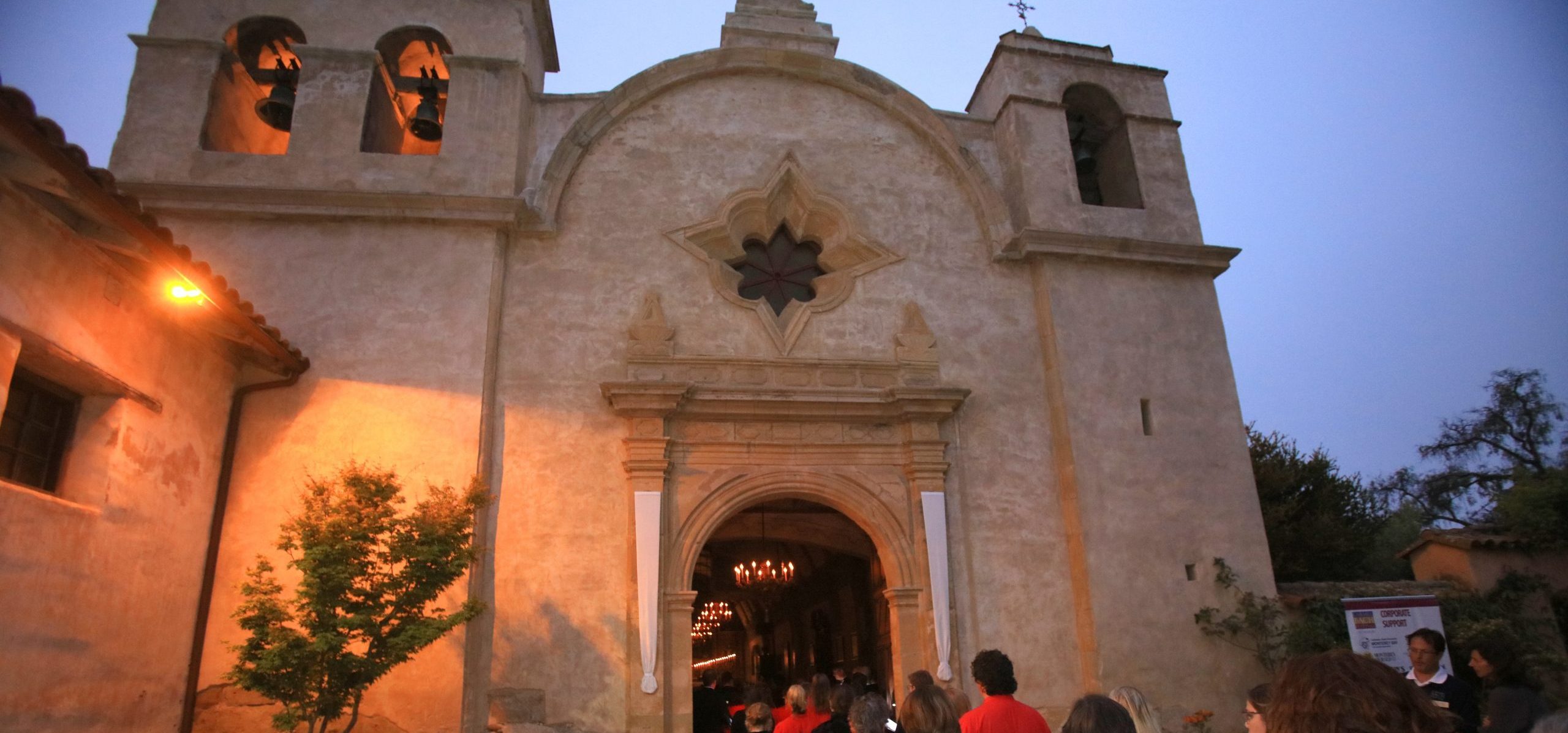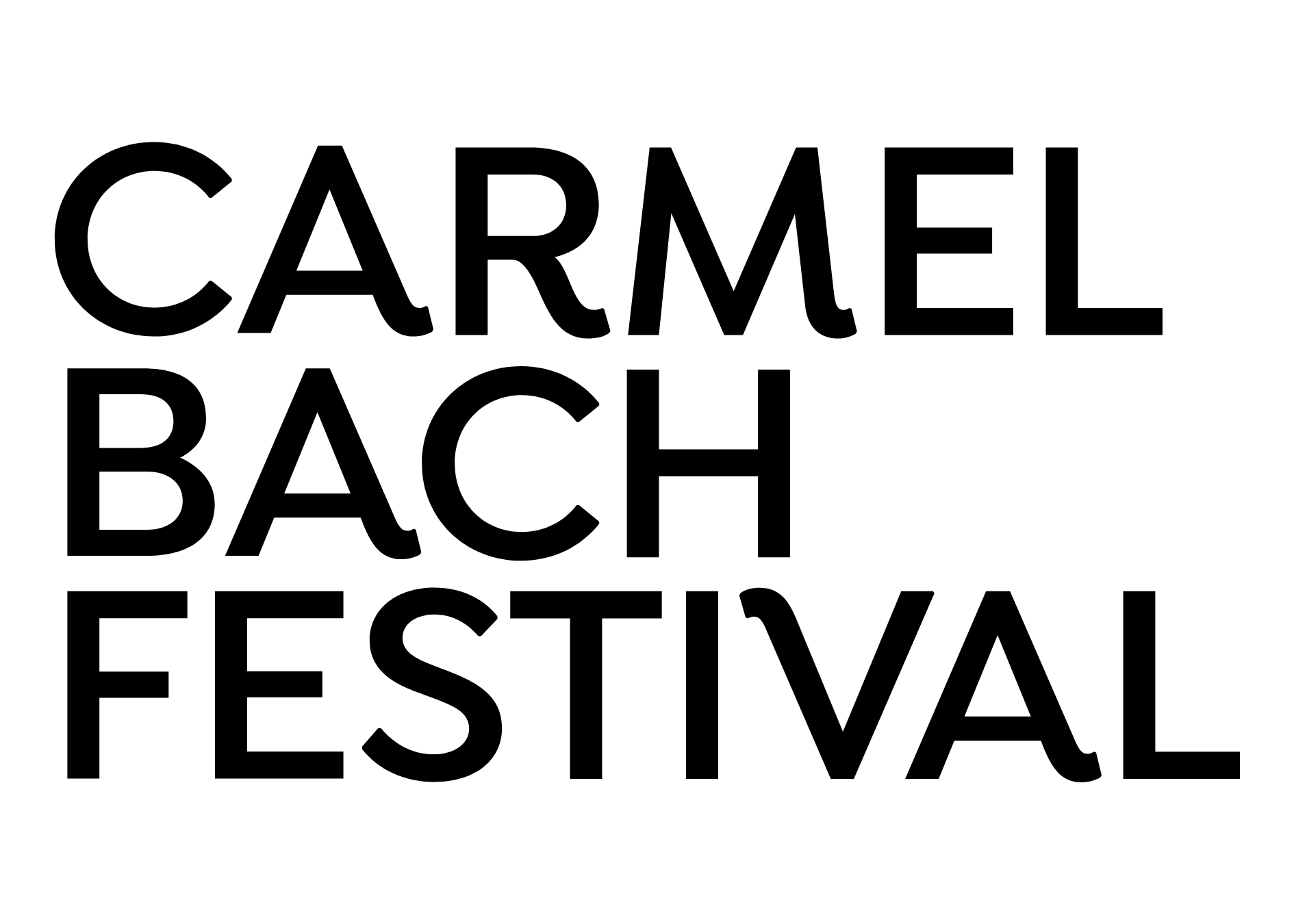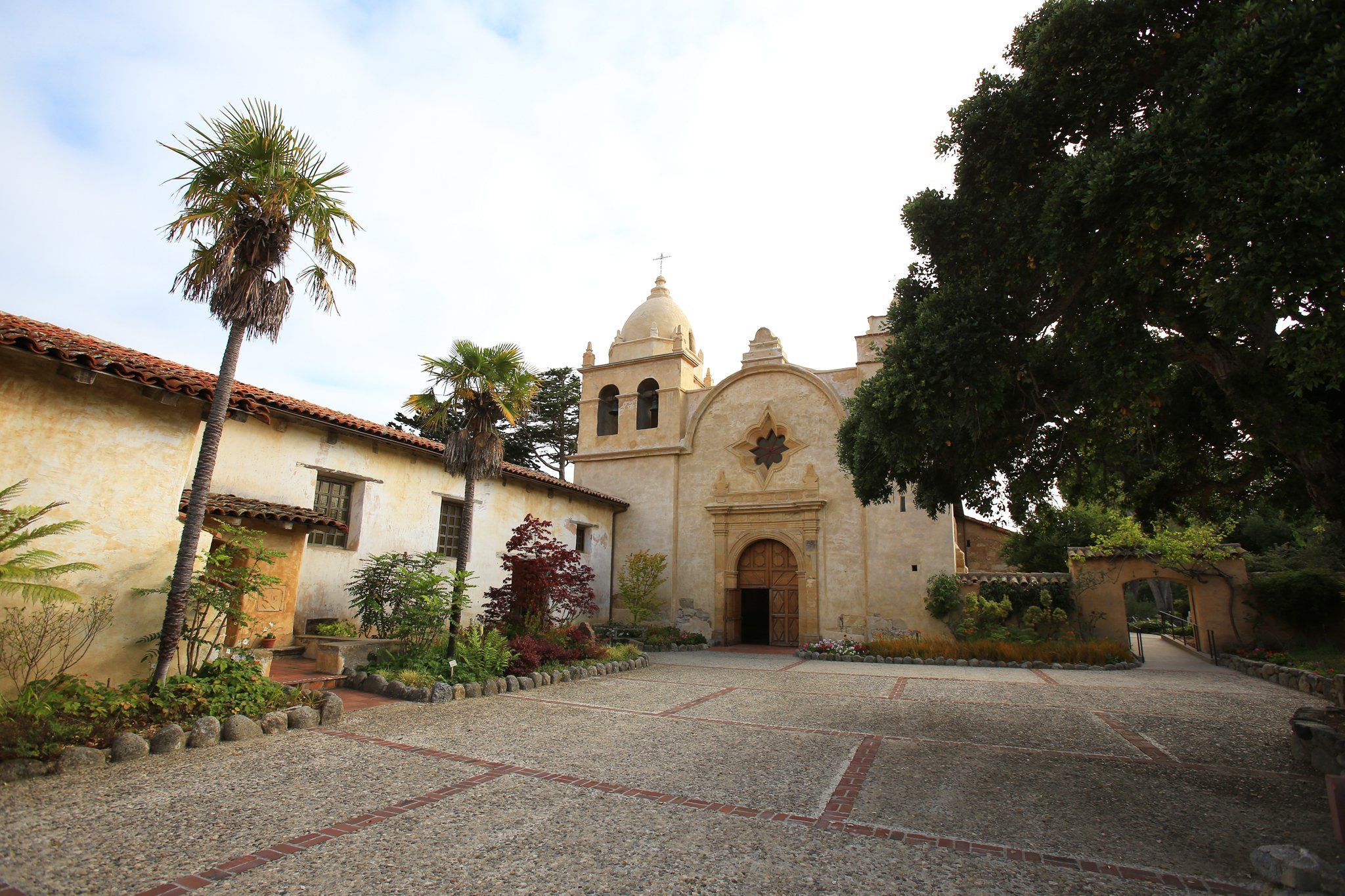
Cathedral Echoes
Wednesdays, July 20 & 27, 8:30 PM
| Processional: A medieval English Christmas | ||
|
Sarum chant |
Puer natus est nobis |
|
| 13th century |
Edi beo thu |
|
|
Tim Krol and Paul Speiser, bass-baritone |
||
| 15th century |
Als I lay on Yoolis night |
|
|
Angelique Zuluaga, soprano, Luthien Anne Brackett, mezzo-soprano |
||
| 15th century |
I saw a swete seemly sight |
|
|
Owen McIntosh and Dann Coakwell, tenor |
||
| The City of Sorrow | ||
|
WILLIAM BYRD |
Ne irascaris, Domine |
|
|
(1543–1623) |
||
|
THOMAS TALLIS |
Lamentations of Jeremiah I |
|
|
(1505–1585) |
||
| To the Virgin | ||
|
BENJAMIN BRITTEN |
Hymn to the Virgin |
|
|
(1913–1976) |
Melanie Russell, soprano; Elizabeth Johnson Knight, mezzo-soprano; Tim Hodges, tenor; David Newman, bass-baritone |
|
|
|
||
|
CECILIA MCDOWELL |
Regina coeli |
|
|
(b. 1951) |
||
| Mass for All Time |
|
WILLIAM BYRD |
Mass for Four Voices |
|
|
RALPH VAUGHAN WILLIAMS |
Mass in G Minor |
|
|
(1872–1958) |
||
|
WILLIAM BYRD |
Kyrie |
|
|
Molly Quinn, soprano; Patricia Thompson, mezzo-soprano; Jos Milton, tenor; Jonathan Woody, bass-baritone |
||
|
|
||
|
RALPH VAUGHAN WILLIAMS |
Gloria | |
| WILLIAM BYRD | Sanctus | |
| WILLIAM BYRD | Agnus Dei | |
|
RALPH VAUGHAN WILLIAMS |
Kyrie | |
| The Blessed City | ||
|
CHARLES VILLIERS STANFORD |
Beati quorum via |
|
|
(1852–1924) |
||
|
WILLIAM HARRIS |
Faire is the Heaven |
|
|
(1883–1973) |
||
| Recessional | ||
|
Sarum chant |
Puer natus est nobis |
|
|
JAMES MACMILLAN |
A Child’s Prayer |
|
| (b. 1959) |
Jennifer Paulino, Linda Lee Jones, soprano |
|
Artists: Festival Chorale conducted by Andrew Megill
Program Notes
Great Britain has been admired for centuries for the excellence of its choirs. These include highly accomplished professional ensembles (such as The Sixteen, the Monteverdi Choir, Tenebrae, Polyphony, the BBC Singers, and the Tallis Scholars), outstanding amateur choirs, and, perhaps most importantly, a network of cathedral choirs whose sound and repertoire lie at the root of what has become known as the British choral tradition.
Tonight, we perform some of the most beloved and beautiful works composed for British cathedral choirs. We begin with a processional in which a melody from the Sarum tradition (the corpus of plainchant used in the British isles) alternates with three medieval carols: a 13th century hymn to the virgin Mary in middle English and two 15th century lullabies addressed to the miraculous Christ-child. The carols all feature the lovely third-based harmonies that made early Renaissance English music the envy of the continent, described by Marin Le Franc as “le contenance angloise” (“the English manner”).
One of the great apexes of British choral music was the Tudor period, which lasted from 1485–1603. The two most famous composers of the era were Thomas Tallis and his student William Byrd. Tallis composed his Lamentations of Jeremiah in the 1560s based on texts from the Biblical book of Jeremiah which bewail the destruction of Jerusalem in 586 BC. The depth of their sorrow elicits some of Tallis’ most expressive music, which alternates between two styles. The words of Jeremiah himself are set syllabically and with plangent harmonies that arise from the English predilection for cross- relations (simultaneous or near-simultaneous sounding of a note and its chromatic inflection; F and F# sung at the same time, for example). These almost painfully intense sections contrast with short sections which set the names of letters of the alphabet (aleph and beth in the excerpt performed tonight) – the book of Jeremiah is an acrostic, in which each verse of the text begins with the next succeeding letter of the Hebrew alphabet, and Tallis follows the tradition of Lamentation settings by composing music sung to the letter names. These sections, which are composed in a more fluid, melismatic style, and with less harmonic tension, have sometimes been compared to the highly decorated initial letters of medieval and Renaissance manuscripts.
William Byrd, like his teacher Tallis, composed both Latin and English works for Catholic or Anglican worship, as required by the changing faiths of the Tudor monarchs. Byrd himself remained fervently, if discreetly, Catholic, and much of his greatest music was composed for illegal, clandestine Latin services. The motet Ne irascaris, Domine, like Tallis’ Lamentations, is an elegy for the fall of Jerusalem. For Byrd, this text must have been especially poignant; it was composed as he saw his fellow Catholics persecuted (and in some cases executed) for expressing their faith.
Benjamin Britten and Cecilia McDowell have both composed in almost every possible genre, including chamber music, opera, and orchestral works. But like many British composers, they were influenced from childhood by the British choral tradition, and they have each contributed works which have become classics of the modern Cathedral choir repertory. Britten’s Hymn to the Virgin, written when he was sixteen years old, sets a text in praise of the Virgin Mary dating from around 1300 (making it a contemporary of the first polyphonic work we perform tonight). Cecilia McDowell’s Regina coeli is another Marian work, but unlike Britten’s luminous and introverted motet, her motet is extroverted and extremely colorful, rhythmically vital, and harmonically exciting.
Late Renaissance composers on the continent often wrote dozens of Masses (Lassus composed around 50, and Palestrina completed 104), but Byrd wrote only three. Each is a masterpiece, with an intensity that is born of the danger inherent in their performance. Tonight, we intersperse movements of the darkly colored and luminous Mass for Four Voices with movements from a Mass inspired by it: Ralph Vaughan Williams’ Mass in G Minor. In the early 20th century, Vaughan Williams was one of a group of composers who self-consciously sought to create a British sound free from the Germanic influence which had dominated the 19th century. To this end, he collected British folk songs, but he also was inspired by the great Elizabethan composers (his “Fantasia on Thomas Tallis” remains one of his most often-performed works), never more so than in his Mass.
Charles Villiers Stanford was an Irish composer whose career spanned the late 19th and early 20th centuries. He was important as a teacher as well as a composer (his students included Holst and Vaughan Williams). His most famous works are for choir: the secular part-song The Blue-bird and the motet Beati quorum via which we perform tonight. The motet, with its exquisite harmonies and sense of inevitable flow effortlessly depicts the state of blessedness. Sir William Henry Harris’ double choir motet Faire is the heaven is also a classic of the cathedral repertoire. Like Stanford’s Beati, it paints a picture of ultimate sublimity, setting a poem by Edmund Spenser which describes the bliss of heaven, culminating with the question “How then can mortal tongue hope to express the image of such endless perfectness?”
The final work of tonight’s program is by a living Scottish composer, James MacMillan. Like Byrd, he is an internationally admired composer who has remained personally committed to Catholicism. A Child’s Prayer was written in the aftermath of the deadliest mass shooting in British history, the Dunblane Massacre. Composed in 1996, the text is a prayer which the composer remembered praying as a child. Its innocence and purity are heart-breaking.
– Andrew Megill
Andrew Megill is the artistic director of Fuma Sacra and serves as chorusmaster for the Montreal Symphony Orchestra. He is also music director of Masterwork Chorus and professor and director of choral activities at the University of Illinois. He is in his 13th season as associate conductor of the Carmel Bach Festival and director of the chorale and chorus.


